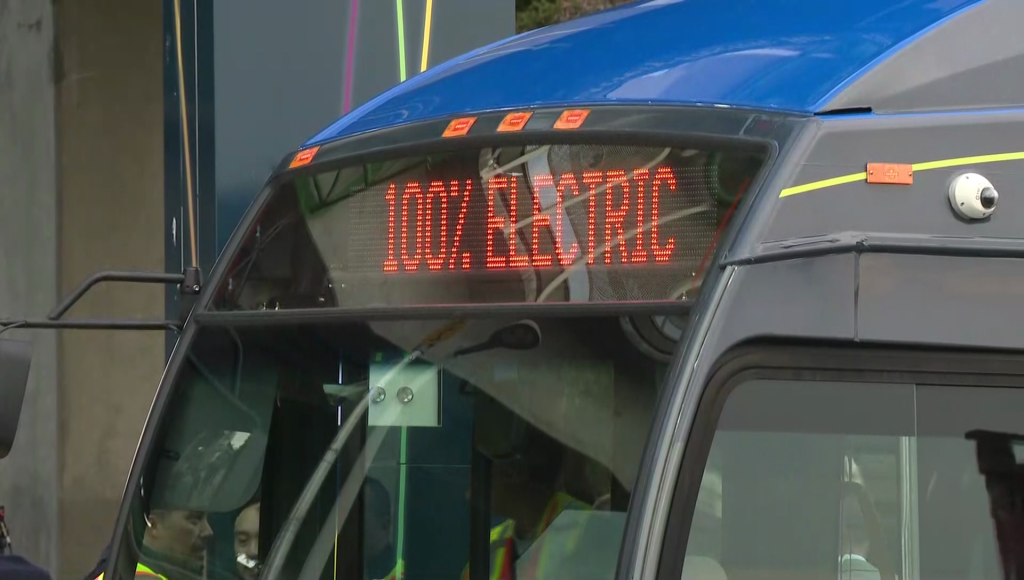As B.C. leads in EV adoption, expert says ‘broad range’ of electric transportation needs to be prioritized

Posted March 6, 2024 4:06 pm.
A new report states B.C. led the country in electric vehicle adoption in 2023, but one expert says other forms of electric transportation deserve more clout in the province’s green transition.
According to new insights by S&P Global Mobility, B.C. had the highest share of Canadian zero-emissions-vehicle registrations last year at about 23 per cent. Alongside Quebec and Ontario, it’s also leading the country with the fastest growing adoption rates.
Country-wide, the share of new vehicle registrations made up by zero-emissions vehicles is also growing, up nearly three per cent from the year before to 11.7 per cent in 2023.
Christina Hoicka, a professor at the University of Victoria and Canada Research Chair in Urban Planning for Climate Change, says B.C. and Quebec’s leading roles are likely due to superior rebates or policy supports in action.
She adds in order to have electric vehicles take off, a few different factors need to be in place, like sufficient charging infrastructure and rebates or loans to help with financing.
“Usually what happens when you have an adoption curve, is that you sort of hit a critical mass and then the adoption or the number of people who buy a new type of technology starts to take off,” Hoicka said. “And I think that that’s what started happening in different provinces in Canada now.”
In B.C., the report states the most popular electric vehicle was the Tesla Model Y. Meanwhile, in Quebec, the Chevrolet Bolt was the most popular.
It goes on to speculate that the edge Chevrolet has over Tesla in Quebec could be part of the reason why Tesla reduced the price of its Model 7 by $4,000 in Canada in February.
Hoicka says this competition for market shares is expected as more companies bring products to the table.
“I think electric vehicles are expanding out in terms of the types of electric vehicles that are out there,” Hoicka said. “For instance, like you could get a truck, you could get a very small, economy car, right. And so there’s more opportunity across the market in terms of people’s preferences for vehicles.”
Single-occupant electric cars not a perfect solution
Despite the province’s promising electric vehicle uptake, Hoicka says it’s not the answer to meeting the country’s zero-emissions targets.
In 2021, transportation was responsible for nearly 30 per cent of Canada’s greenhouse gas emissions and Hoicka says that number is not declining.
“It’s a sector that we do need to reach and it’s hard to reach,” Hoicka said.
“Should we be reaching it with electric vehicles and keeping everyone in single-occupant vehicles, or should we provide better and more public transportation that’s electrified?”
While she says electric vehicles have a place in Canada’s transportation transition, based on electricity demand alone, they can’t be policymakers’ only focus.
“If we electrify everything, so if we go to electric vehicles and we go to electric heating, what will end up happening is our electricity grid will need to double or triple in size. And at 145 gigawatts already, that’s pretty enormous,” she said.
Hoicka adds there are a lot of resource constraints when it comes to the critical minerals needed to support the electric transition.
For these reasons, Hoicka is advocating for more people to get on electric bikes — which have a battery the fraction the size of a car’s — and electric public transit that can maximize passenger numbers.
“We really need to be looking at a broad range of transportation and making sure that we’re improving the conditions for things like walking, cycling, public transit as well, because electric vehicles are not going to be available to the widest range of population, due to price, where it’s at right now,” she said.
Every city in Canada could stand to better its cycling and walking infrastructure, Hoicka says. Resources like skills training for cycling as a commuter could also be hugely impactful in helping more people feel comfortable with these active modes of transportation, which are critical in Canada’s lofty emissions goals, she adds.
“I think that electric vehicles have a place in that transition but because it’s going to be so complex I think that public transit and active forms of transportation and electric bikes also need to have a very important role in that transition as well.”








